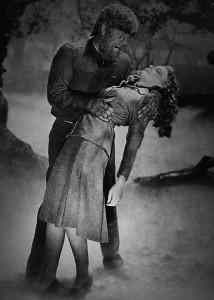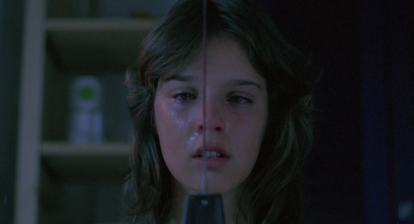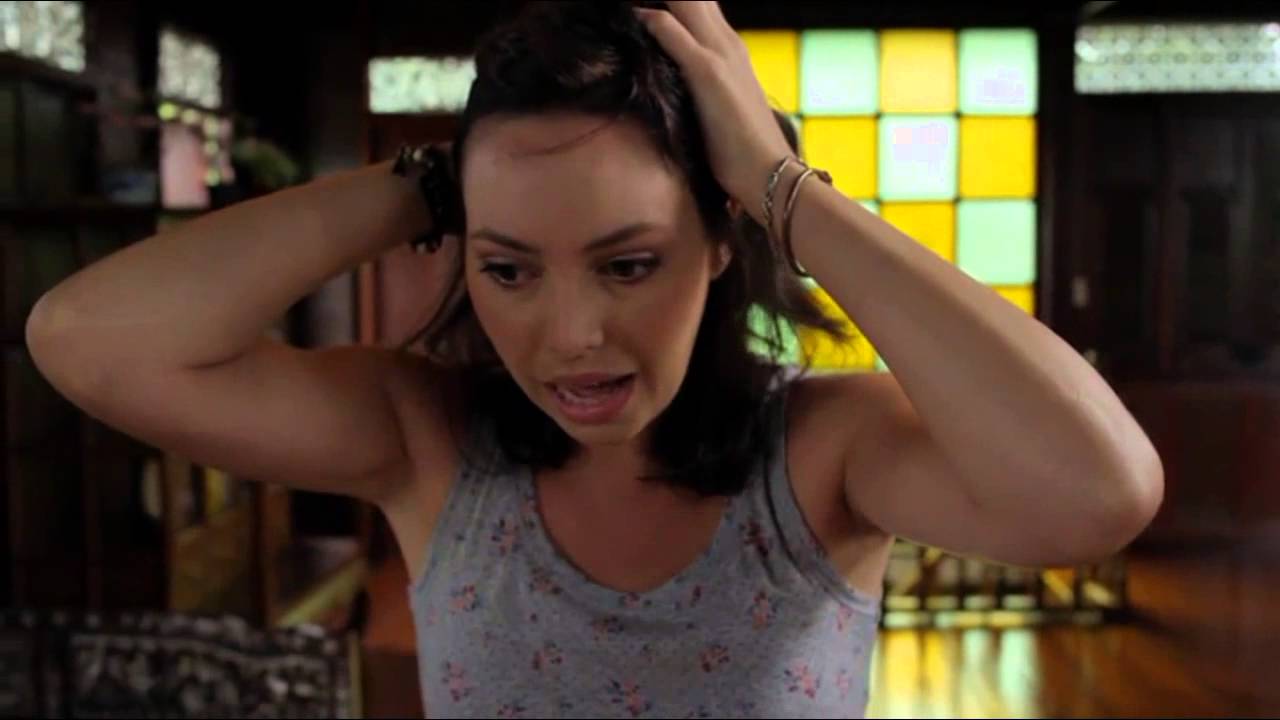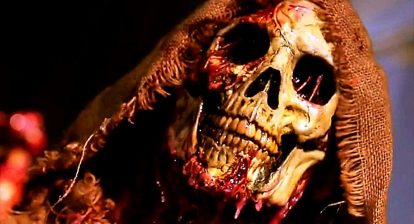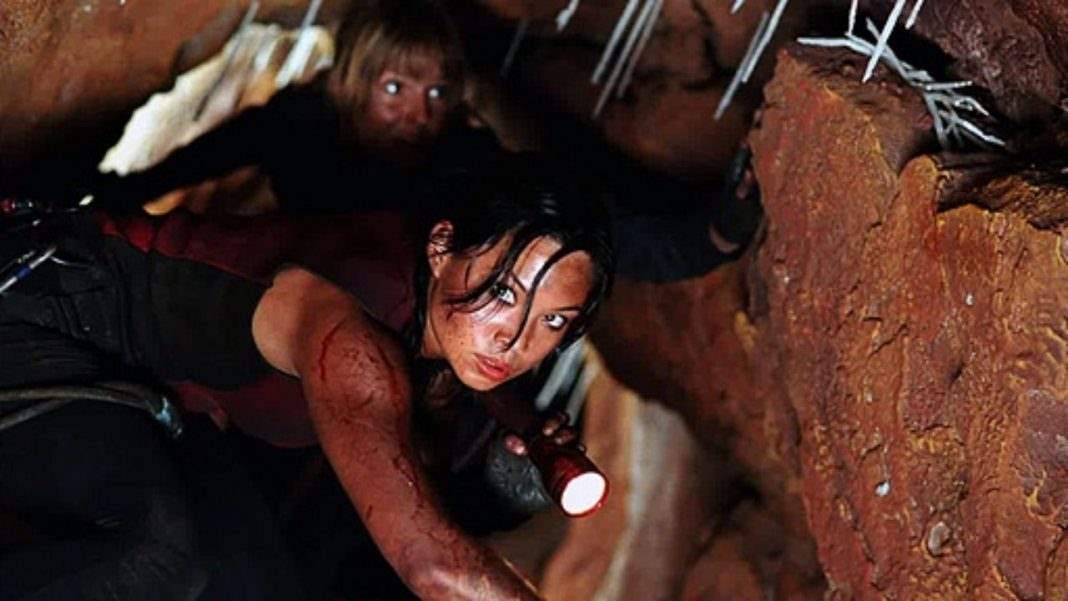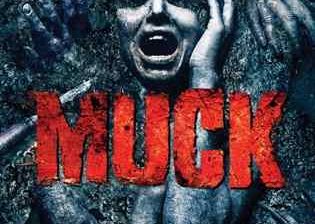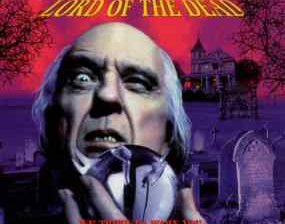Legends of werewolves have been around for centuries, and certain elements of the lore can even be traced back to ancient Greek and Roman mythology. That these stories have survived this long is proof of their power, though certain changes over time is inevitable. These days, one doesn’t become a wolf for murdering a child (as the Greeks say happened to Lycaon), but rather he becomes a wolf under the rays of the full moon after being infected, or perhaps cursed. There are rules, certainly, but none of them are written in stone, and variations can be found in each interpretation. And that is part of the fun.
Today we’re going to be exploring the cinematic history of the werewolf, though I obviously could not include every example under the sun. Instead, I chose those which seemed to have historical significance, a particularly curious appeal, or a special place in the hearts of fans. I have included television shows in which werewolves were primary characters, but have excluded those series in which a werewolf may make a “guest appearance”—for instance, X-Files and Kolchak have not been included, but Being Human has.
Has your favorite werewolf been given the short shrift? Feel free to call me out and sing their praises in the comment section below.
The earliest example of werewolves on film that I could find mention of was simply titled The Werewolf from 1913. Although now thought to be lost, it reportedly followed a Navajo woman who uses witchcraft to seek vengeance against those who did her wrong, but the specifics vary from source to source and the truth is likely lost to time. The film was directed by Henry McRae, who racked up over 160 such credits during his 20 year career.
In 1925, silent Western star George Chesebro starred in and directed Wolf Blood, about a lumberjack who is assaulted by members of a rival logging company and left for dead. With no other choice, a visiting doctor gives him a blood transfusion from a wolf, and he soon thereafter suffers from dreams of running with a pack of the vicious animals. When the rival loggers start being attacked by wolves, everyone begins to suspect that he has become a werewolf. Often erroneously referred to as the earliest known werewolf film, it at least holds the distinction of being the earliest werewolf film that is still known to exist.
 Universal Studios released their first entry in the lycanthrope canon with 1935’s Werewolf of London, an important but often overlooked film. It starred character actor Henry Hull as a botanist who is attacked by a werewolf, thus becoming one himself. This was the film that introduced specific key notions that are still associated with werewolves today—namely that it is a curse that can be passed on via bite; that transformations are brought on specifically by the rays of the moon; that a temporary cure can be found through holistic means (in this case the mariphasa plant); and that a reluctant werewolf might attempt to lock himself up at night to prevent any further damage. It should be noted that the werewolf’s appearance was the work of famed makeup artist Jack Pierce, who was responsible for many of Universal’s most famous character designs, including Boris Karloff’s Frankenstein (1931).
Universal Studios released their first entry in the lycanthrope canon with 1935’s Werewolf of London, an important but often overlooked film. It starred character actor Henry Hull as a botanist who is attacked by a werewolf, thus becoming one himself. This was the film that introduced specific key notions that are still associated with werewolves today—namely that it is a curse that can be passed on via bite; that transformations are brought on specifically by the rays of the moon; that a temporary cure can be found through holistic means (in this case the mariphasa plant); and that a reluctant werewolf might attempt to lock himself up at night to prevent any further damage. It should be noted that the werewolf’s appearance was the work of famed makeup artist Jack Pierce, who was responsible for many of Universal’s most famous character designs, including Boris Karloff’s Frankenstein (1931).
Pierce also did the makeup for our next film, Universal’s The Wolf Man from 1941—arguably one of the most famous werewolf films of all time. It starred Lon Chaney, Jr. as the titular character (Larry Talbot in his human form), and also featured Bela Lugosi and Claude Rains in other roles. This was the film that spawned the first werewolf franchise, and Talbot returned in Frankenstein Meets the Wolf Man (1943); House of Frankenstein (1944); and House of Dracula (1945). The death knell of the character came when he showed up in Abbot and Costello Meet Frankenstein (1948)—which was basically the equivalent of launching a character into space in those days. On an interesting side note, this last film was given the unauthorized remake treatment in Ismail Yassin Meets Frankenstein (1954), starring famed Egyptian comedian Ismail Yassin. In 2010, The Wolf Man was given a big-budget remake, with Benicio del Toro stepping into the Talbot role.
The year after Universal’s famous film, Poverty Row production house P.R.C. released The Mad Monster (1942) in which mad scientist George Zucco turns his simple-minded test subject into a werewolf via a secret formula. 20th Century Fox got in on the game the same year with The Undying Monster, based on the novel by Jessie Douglas Kerruish from 1922.
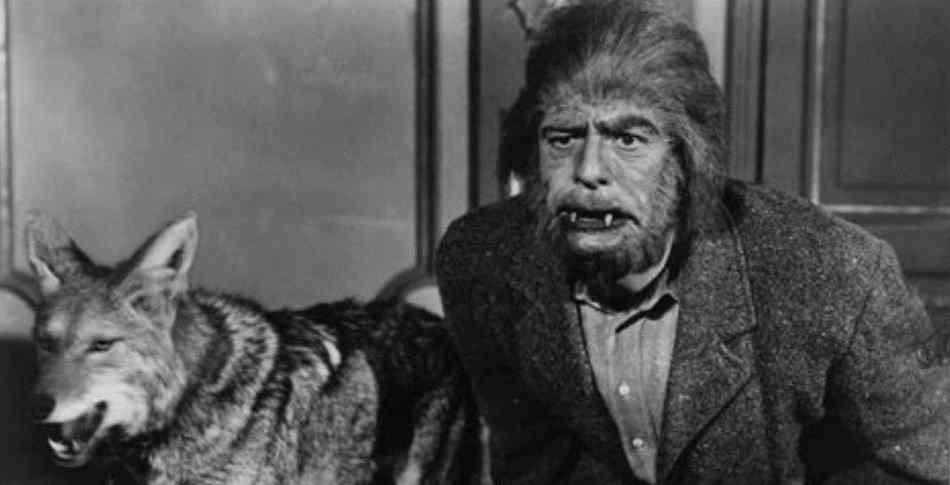 1944 gave us Columbia Pictures’ Return of the Vampire with Bela Lugosi playing bloodsucker Armand Tesla, which may as well have been a sequel to Dracula, but they couldn’t use the name due to rights issues. Bela’s assistant in this film is a werewolf played by Matt Willis, who stands out from the pack so to speak, because he is able to talk while he is wolfed out. It wasn’t until much later that a werewolf retaining some if not all of his human coherence after transformation became an accepted norm.
1944 gave us Columbia Pictures’ Return of the Vampire with Bela Lugosi playing bloodsucker Armand Tesla, which may as well have been a sequel to Dracula, but they couldn’t use the name due to rights issues. Bela’s assistant in this film is a werewolf played by Matt Willis, who stands out from the pack so to speak, because he is able to talk while he is wolfed out. It wasn’t until much later that a werewolf retaining some if not all of his human coherence after transformation became an accepted norm.
Columbia actually released two werewolf films in 1944, the other being Cry of the Werewolf, which starred Nina Fuch as a young gypsy woman who discovers her bloodline suffers from lycanthropy and uses it to protect her family secret.
Aside from the aforementioned Universal sequels, the moon must not have shined very bright because the werewolf movie all but disappeared after this until Columbia returned with yet another feature, this one sharing the simple title with the original film, The Werewolf (1956). This time around, it was a serum of irradiated wolf blood that was responsible for the transformation.
AIP released their I Was a Teenage Werewolf in 1957, starring a young Michael Landon in the lead. The combination of teen angst and monster movie was a potent one, becoming one of the studio’s biggest hits and prompting them to follow it up with I Was a Teenage Frankenstein the same year. Both monsters appeared again, of a sort, in 1958’s How to Make a Monster, which had two young actors being hypnotized and prompted to kill while wearing their movie makeup.
1960’s House of Terror was a low-rent Mexican monster movie about a mad scientist who attempts to resurrect a mummy, only to discover that the mummy is really a werewolf. It’s being included here for the sheer absurdity of the synopsis, and also for featuring Lon Chaney, Jr. as the wolf-mum. Footage from this film was edited into additional footage and released in 1964 as Face of the Screaming Werewolf. This patchwork film apparently inspired a surrealistic novel of the same name from author Ken Gage, first published in 2006.
Hammer studios gave us Curse of the Werewolf in 1961, based on Guy Endore’s 1933 novel The Werewolf of Paris. It starred British actor Oliver Reed in the lead, just one of his many roles for the studio in the era. The same year, we received the self-explanatory Werewolf in a Girls Dormitory which was released on a double-bill with Boris Karloff’s Corridors of Blood. The title inspired the name of the otherwise unrelated 2006 film Werewolf in a Women’s Prison.
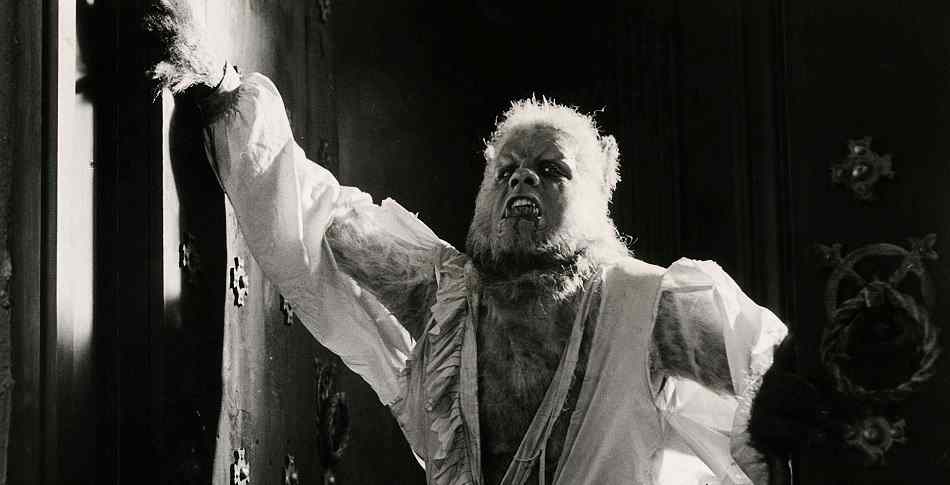 Exploitation kingpin Lee Frost released the campy House on Bare Mountain in 1962, which has Dracula, Frankenstein’s monster and the Wolfman peeping on a bunch of topless beauties. I don’t suppose much more needs to be said about that. 1962 also gave us Edward L. Kahn’s version of Beauty and the Beast, in which the beast in question turned from man to wolf at night.
Exploitation kingpin Lee Frost released the campy House on Bare Mountain in 1962, which has Dracula, Frankenstein’s monster and the Wolfman peeping on a bunch of topless beauties. I don’t suppose much more needs to be said about that. 1962 also gave us Edward L. Kahn’s version of Beauty and the Beast, in which the beast in question turned from man to wolf at night.
In 1964, the television sitcom The Munsters debuted on CBS, revolving around a family of classic-style monsters living in normal society. Among them was young son Eddie, a child werewolf, played by Butch Patrick. The series ran for two seasons, ending in 1966. The characters reunited the same year the series ended for the theatrical film Munster, Go Home!; again for the rare animated special The Mini-Munsters (1973), which, despite the name, did not feature younger versions of the characters; and the made-for-TV movie The Munsters’ Revenge (1981). In 1988, the television series was relaunched as The Munsters Today, which ran until 1991. This was followed with two additional TV movies: Here Come the Munsters (1995) and The Munsters’ Scary Little Christmas (1996). Brad Fuller sought to reimagine the series with 2012’s Mockingbird Lane, but it never made it past the pilot episode.
In 1965, Amicus Productions released their first in a stream of anthology horror films, Dr. Terror’s House of Horrors, the first segment of which was entitled “Werewolf”. That year also gave us Ed Wood’s Orgy of the Dead, which featured a wolfman and a mummy amidst the bizarre proceedings; and House of the Black Death, which is an incomprehensible mess from three different directors and had Lon Chaney Jr. as a warlock, lots of chanting and dancing, and just a touch of lycanthropy.
The fan-favorite Rankin-Bass stop-motion film Mad Monster Party was released in 1967, featuring a whole bevy of movie monsters (including the Wolfman) attending a party held by the retiring Baron Frankenstein. They returned for a sequel of sorts in the traditionally animated TV special The Mad, Mad, Mad Monsters in 1972, in which they reassembled for the wedding of Frankenstein’s monster.
In 1968, cult Spanish filmmaker Paul Naschy began his series of werewolf films in which he plays the cursed Waldemar Daninsky. Frankenstein’s Bloody Terror was followed up almost immediately with Nights of the Wolfman (1968, seemingly lost today). Next up were Assignment Terror (1969); Fury of the Wolfman (1970); The Werewolf Vs. the Vampire Woman (1970); Dr. Jekyll and the Werewolf (1971); Curse of the Devil (1972); Night of the Howling Beast (1975); The Craving (1980); The Beast and the Magic Sword (1983, never released in America); Licantropo (1996); and Tomb of the Werewolf (2004). Furthermore, Naschy starred in three additional werewolf films that were not part of the Waldemar series: Good Night Mr. Monster (1982), a children’s musical comedy; The Howl of the Devil (1987), in which he plays a mad actor who briefly disguises himself as a werewolf; and A Werewolf in the Amazon (2005)—none of which have been shown outside of Spain.
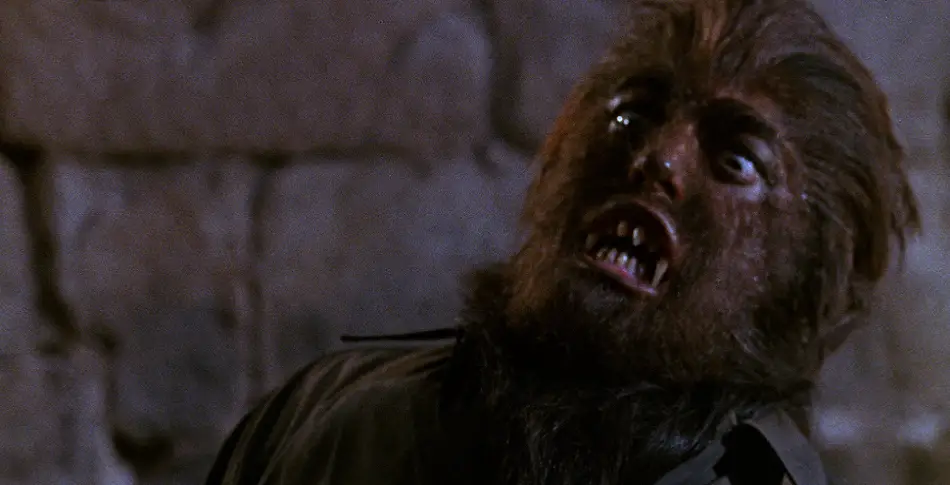 Al Adamson released his Blood of Dracula’s Castle in 1969, which had Count Dracula and his wife luring victims to their castle until the threat of them being evicted appears. It also had a character named Mango who is obsessed with the moon, and is either a plain old lunatic or a werewolf…depending on which version of the film you see, as there were apparently two in circulation.
Al Adamson released his Blood of Dracula’s Castle in 1969, which had Count Dracula and his wife luring victims to their castle until the threat of them being evicted appears. It also had a character named Mango who is obsessed with the moon, and is either a plain old lunatic or a werewolf…depending on which version of the film you see, as there were apparently two in circulation.
Werewolves on Wheels, which blended the biker film with a horror movie, was released in 1971, the same year in which we saw the laughable Beast of the Yellow Night from Filipino filmmaker Eddie Romero, where a man saved from death by the devil himself becomes his werewolf disciple.
In 1972, David Janssen of The Fugitive fame starred in the ABC Movie of the Week Moon of the Wolf as a Louisiana sheriff protecting his town from a series of werewolf attacks; Jess Franco delivered Dracula, Prisoner of Frankenstein, which also featured a wolfman that didn’t earn title billing; and Andy Milligan released the spectacularly-titled The Rats Are Coming! The Werewolves Are Here! on the unsuspecting populace.
1973 gave us the political horror comedy The Werewolf of Washington which starred the under-appreciated Dean Stockwell as a White House press secretary who succumbs to lycanthropy; and Universal’s The Boy Who Cried Werewolf, about a youngster whose father becomes a werewolf but nobody will believe him.
1974’s The Beast Must Die was based on the 1950 short story “There Shall Be No Darkness” by James Blish, and invited viewers to decipher who among the cast is actually a werewolf based on clues supplied throughout the film. It even went so far as to offer a 30-second “Werewolf Break” for the audience to make their final conclusions before the answer was revealed. The gimmicky break was edited out of the film when shown under its alternate title Black Werewolf. Also in 1974, Andy Milligan struck again with the werewolf-married-to-a-vampire schlocker Blood!
1975 offered up Peter Cushing in Legend of the Werewolf as a man who was raised by wolves, displayed in a freak show, and transformed into a wolfman by jealousy; and the Dick Clark-produced TV movie The Werewolf of Woodstock, which is pretty much exactly what it sounds like.
In 1976, the rape-revenge film got a lycanthropic makeover with the Italian production Werewolf Woman; and the live action Saturday morning children’s show Monster Squad debuted on NBC, putting the Wolfman, Dracula and Frankenstein’s monster together on a quest to make up for their past misdeeds. Another kid’s werewolf show, the animated Scooby-Doo derivative Fangface, debuted on ABC two years later, and Drak Pack, a cartoon whose setup was very much the same as Monster Squad, aired on CBS starting in 1980.
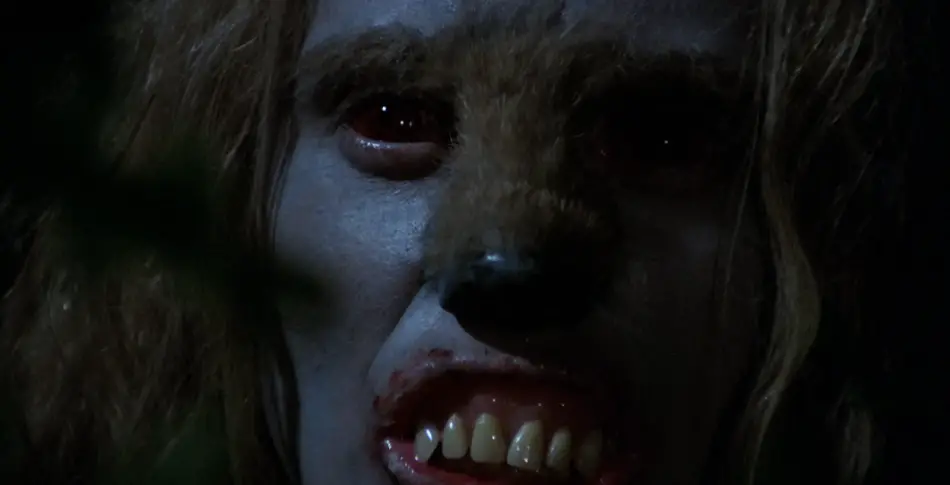 1981 was arguably the most important year in werewolf cinema history since Universal released The Wolf Man in 1941. It gave us three distinctly modern takes on the werewolf legend that are still discussed today: John Landis’ An American Werewolf in London, which received a belated (and loose) sequel with 1997’s An American Werewolf in Paris—and two completely unrelated films, A Mexican Werewolf in Texas from 2005 and An Erotic Werewolf in London, which tried to capitalize on the name (the latter of which I may have to explore further for the sake of completeness); Wolfen, which was based on the novel by Whitley Strieber, and may not technically be a werewolf film at all but is close enough to deserve a mention; and Joe Dante’s The Howling, based on the novel by Gary Brandner. The Howling was followed up with a series of increasingly disappointing sequels: Howling II: Your Sister Is a Werewolf (1985); Howling III: Marsupials (1987); Howling IV: The Original Nightmare (1988); Howling V: The Rebirth (1989); Howling VI: The Freaks (1991); Howling VII: New Moon Rising (1995); and Howling VIII: Reborn (2011). 1981 also gave us the Larry Cohen high school werewolf comedy Full Moon High, which isn’t held in quite such high esteem.
1981 was arguably the most important year in werewolf cinema history since Universal released The Wolf Man in 1941. It gave us three distinctly modern takes on the werewolf legend that are still discussed today: John Landis’ An American Werewolf in London, which received a belated (and loose) sequel with 1997’s An American Werewolf in Paris—and two completely unrelated films, A Mexican Werewolf in Texas from 2005 and An Erotic Werewolf in London, which tried to capitalize on the name (the latter of which I may have to explore further for the sake of completeness); Wolfen, which was based on the novel by Whitley Strieber, and may not technically be a werewolf film at all but is close enough to deserve a mention; and Joe Dante’s The Howling, based on the novel by Gary Brandner. The Howling was followed up with a series of increasingly disappointing sequels: Howling II: Your Sister Is a Werewolf (1985); Howling III: Marsupials (1987); Howling IV: The Original Nightmare (1988); Howling V: The Rebirth (1989); Howling VI: The Freaks (1991); Howling VII: New Moon Rising (1995); and Howling VIII: Reborn (2011). 1981 also gave us the Larry Cohen high school werewolf comedy Full Moon High, which isn’t held in quite such high esteem.
In 1984, we saw the release of the British werewolf fantasy In the Company of Wolves, starring Angela Lansbury and based on the short story by Angela Carter; and the hard rock horror story Monster Dog, starring Alice Cooper as rocker Vince Raven.
1985 is fondly remembered by werewolf fans for the release of two favorite films: Silver Bullet, based on the Stephen King novella Cycle of the Werewolf, starred a paraplegic Corey Haim and a drunken Gary Busey. Teen Wolf, starring Michael J. Fox, took a more comedic approach and made the titular character a high school basketball star. It was followed up with an animated series in 1986; a theatrical sequel, Teen Wolf Too starring Jason Bateman in 1987; and a more dramatic live-action MTV reboot series starting in 2011.
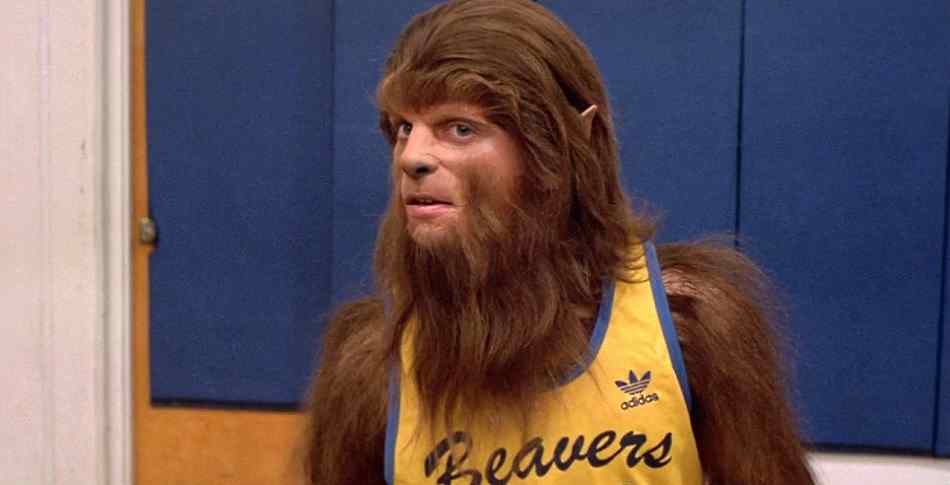 A nostalgic favorite for nearly all horror fans of a certain age, Monster Squad was released in 1987 and pitted a group of knowledgeable youngsters (and Frankenstein’s monster) against Dracula, the Gill-Man, the Mummy, and the Wolfman. Fred Dekker gave us a taste of self-aware horror nearly a decade before Wes Craven did it with Scream (1996). The same year that Monster Squad hit theaters, the fledgling Fox network premiered its television series Werewolf, about a lycanthropic college student trying to eradicate his curse by destroying the originator of the bloodline.
A nostalgic favorite for nearly all horror fans of a certain age, Monster Squad was released in 1987 and pitted a group of knowledgeable youngsters (and Frankenstein’s monster) against Dracula, the Gill-Man, the Mummy, and the Wolfman. Fred Dekker gave us a taste of self-aware horror nearly a decade before Wes Craven did it with Scream (1996). The same year that Monster Squad hit theaters, the fledgling Fox network premiered its television series Werewolf, about a lycanthropic college student trying to eradicate his curse by destroying the originator of the bloodline.
In 1988, anthology series Tales from the Darkside aired its one and only werewolf-themed episode, “Family Reunion”, about a mother who is trying to get her son back from his father—problem being that her son is secretly a werewolf. It earns a mention on the basis of featuring special effects by the famous Tom Savini.
1989 saw the premiere of the short-lived television series She-Wolf of London (unrelated to the 1946 film of the same name), which followed a female grad student-turned-werewolf studying mythology with a young professor, and the supernatural adventures they stumble into.
HBO anthology series Tales from the Crypt aired the episode “The Secret” in 1990, about a young boy taken in by a pair of vampires. The twist ending reveals that he has his own secret: he’s a werewolf. The series had another such episode called “Werewolf Concerto”, about a group of travelers stuck in a hotel with a killer werewolf, which aired in 1992.
Also in 1992, Mary Stuart Masterson discovered that she was married to a werewolf in the nontraditional horror-western hybrid Mad at the Moon. Another unlikely hybrid, the horror-crime-action film Full Eclipse was released in 1993, and revolved around a special team of law enforcement agents who could turn into werewolves to aid in their job. Taking a slightly more traditional approach to the legend, 1994’s Wolf starred Jack Nicholson as a book editor who gets bitten by the title creature and finds himself transforming.
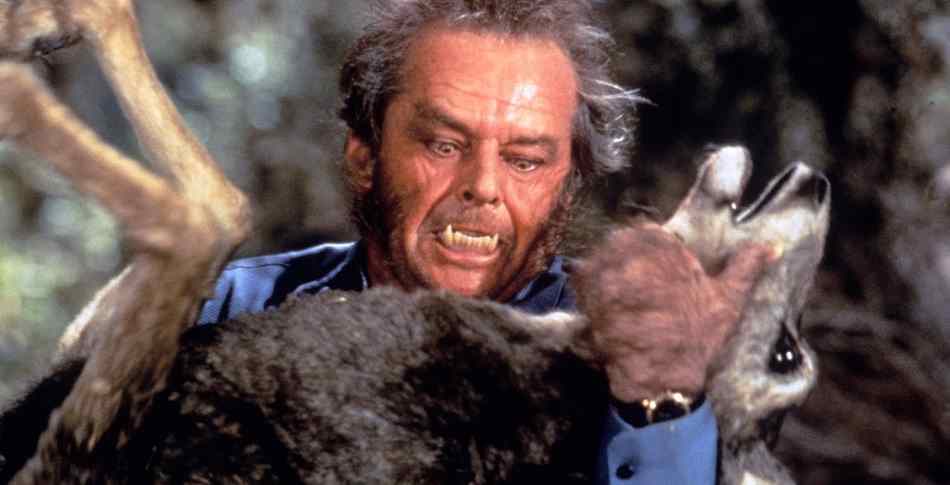 For sheer weirdness, you can’t do much better (or is that worse?) than 1995’s Monster Mash: The Movie, a musical film based on the Bobby Pickett song, starring Pickett himself as Dr. Frankenstein. It also features Candace Cameron as the human Mary, Ian Bohen (coincidentally of MTV’s Teen Wolf) as her boyfriend Scott, John Kassir (voice of the Cryptkeeper from HBO’s Tales from the Crypt) as Igor, and So You Think You Can Dance judge Adam Shankman as the lycanthropic Wolfie. Count and Countess Dracula, as well as a mummified Elvis Presley to round out the proceedings.
For sheer weirdness, you can’t do much better (or is that worse?) than 1995’s Monster Mash: The Movie, a musical film based on the Bobby Pickett song, starring Pickett himself as Dr. Frankenstein. It also features Candace Cameron as the human Mary, Ian Bohen (coincidentally of MTV’s Teen Wolf) as her boyfriend Scott, John Kassir (voice of the Cryptkeeper from HBO’s Tales from the Crypt) as Igor, and So You Think You Can Dance judge Adam Shankman as the lycanthropic Wolfie. Count and Countess Dracula, as well as a mummified Elvis Presley to round out the proceedings.
In 1996, the werewolf film Bad Moon was released, based on the novel Thor by Wayne Smith. Although the movie received almost universally negative reviews, it’s being mentioned here because it was written and directed by Eric Red, who scripted fan favorite horror flicks The Hitcher (1986) and Near Dark (1987).
The television series Buffy the Vampire Slayer, based on the movie of the same name, premiered on the WB in 1997. Although it initially concentrated mostly on vampire monster-of-the-week scenarios, werewolves made occasional appearances, and the lycanthrope Oz, played by Seth Green, became a regular character.
The same year that Buffy first aired, Universal revived the theme and title (if not the storyline) of a previous effort with the two-part miniseries House of Frankenstein. This time around, the house in question was actually a night club for vampires whose owner is a bloodsucking serial killer, being hunted by the police. The lead investigator in the case, as well as the perpetrator, are both in love with a female werewolf, and Frankenstein’s monster is thawed out from a block of ice like Captain America. We also got The Creeps from Full Moon Features which gave us Dracula, the Mummy, Frankenstein’s monster, and the Wolfman in decidedly smaller scale—they were all played by little people.
Canadian television series Big Wolf on Campus first hit the airwaves in 1999, running for three seasons. It followed a werewolf student who defended his hometown of Pleasantville against evil supernatural forces, though most of the residents viewed him as the real threat.
Ginger Snaps was released in 2000, starring Katherine Isabelle as a teenage werewolf and Emily Perkins as her wary sister. It generated positive buzz for its use of strong female characters and werewolfism as a metaphor for puberty, and garnered two sequels. Ginger Snaps 2: Unleashed was filmed back-to-back with the prequel film Ginger Snaps Back: The Beginning, and both were released in 2004.
In 2001, CBS began airing their series Wolf Lake about a pack of werewolves who lived in a Seattle suburb and are investigated by police officer Lou Diamond Phillips. It was canceled after only five episodes, though the other episodes eventually aired on the Sci-Fi Channel.
The British-made, Scotland-set Dog Soldiers was released in 2002. Written and directed by Neil Marshall, it followed a group of soldiers who were expecting a training exercise but instead found themselves in a war against werewolves. It received many rave reviews, and a sequel is reportedly in the works—though it’s been talked about frequently for the past decade, so I’ll believe it when I see it.
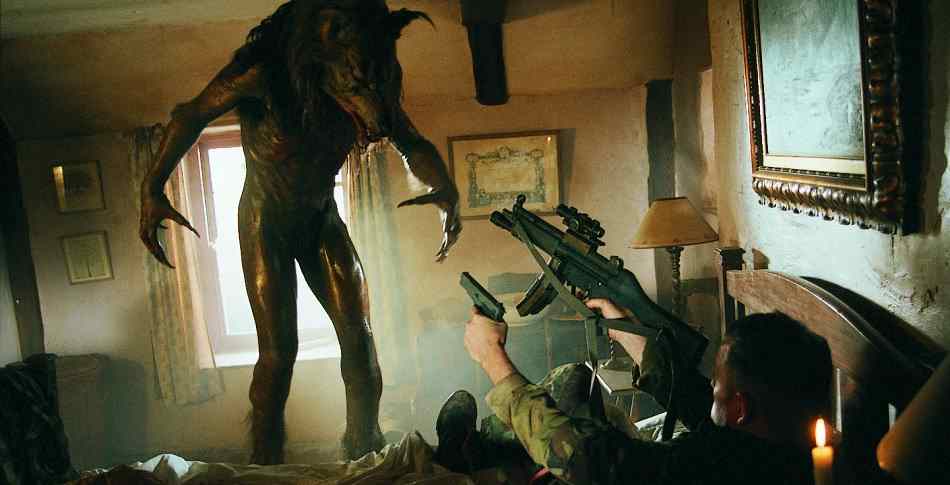 The highly-stylized action flick Underworld, about a seemingly-endless battle between vampires and werewolves (called Lycans here) was released to theaters in 2003, starring Kate Beckinsale. It was enough of a success to spawn an entire franchise: Underworld: Evolution was released in 2006, followed by Underworld: Rise of the Lycans in 2009, and Underworld: Awakening in 2012. Underworld: Next Generation is set to be released this year, and an unnamed sixth film as well as a television series are said to be in development.
The highly-stylized action flick Underworld, about a seemingly-endless battle between vampires and werewolves (called Lycans here) was released to theaters in 2003, starring Kate Beckinsale. It was enough of a success to spawn an entire franchise: Underworld: Evolution was released in 2006, followed by Underworld: Rise of the Lycans in 2009, and Underworld: Awakening in 2012. Underworld: Next Generation is set to be released this year, and an unnamed sixth film as well as a television series are said to be in development.
In 2004, Universal released an homage to themselves with the financially-successful but critically-panned Van Helsing, starring Hugh Jackman in the titular role. It featured Dracula, Frankenstein and his monster, and, of course, werewolves.
2005 saw the release of Cursed. A lycanthrope film from Kevin Williamson and Wes Craven, the team that reinvigorated the slasher film with Scream, should have been a slam dunk, but it went off the rails in a major way. It does have a great cast, though: Christina Ricci, Jesse Eisenberg, Portia de Rossi, Joshua Jackson, and Nick Offerman to name a few. Unfortunately, it also has Scott Baio, Craig Kilborn, and Lance Bass playing Scott Baio, Craig Kilborn and Lance Bass, respectively.
Lions Gate and After Dark Films released the horror action film Skinwalkers in 2006, about two warring packs of werewolves and a young boy that they are fighting for possession of. Director James Isaac also gave us Jason X in 2001, but don’t hold that against him. He also worked on the special effects for Gremlins (1984), Enemy Mine (1985), and House 2: The Second Story (1987), so that has to count for something.
In 2007, modern cult favorite Trick ‘r Treat was released from filmmaker Michael Dougherty. An anthology film, it offered up five short segments that all overlap to some extent, and one of them, the segment entitled “Surprise Party”, involved a fake vampire and real werewolves. The same year, we got the Agnes Bruckner/Hugh Dancy werewolf film Blood and Chocolate.
2008 gave us three different television shows that fit the werewolf bill: HBO’s True Blood, based on the Sookie Stackhouse series of novels by Charlaine Harris, was vampire-centric, but it often featured other supernatural creatures, and eventually added a werewolf to the cast of characters; SyFy’s Sanctuary, which followed a group of characters sworn to protect various cryptids and monsters—one of these protectors being a werewolf; and the BBC series Being Human, which centered around a ghost, a vampire, and a werewolf sharing an apartment together and attempting to be as “human” as possible. An American version of the series launched on SyFy in 2011.
On the movie side of things, 2008 saw the release of Animals, notable for being written by splatterpunk pioneers John Skipp and Craig Spector.
In 2009, we got the inspired but uneven House of the Wolf Man from Eben McGarr. Shot in black-and-white and utilizing classic themes, it was a throwback to the Universal monster pics of old. In what was either a bit of genius casting or a bit of stunt casting, Lon Chaney’s grandson Ron Chaney appears as Bela Reinhardt. Anthology series Fear Itself, something of a domesticated cousin of Masters of Horror, gave us their take on the subgenre the same year with the episode “Something With Bite”, starring Wendell Pierce as a veterinarian who undergoes the change after being bitten by an animal in his care.
SyFy’s original movie Red: Werewolf Hunter first aired in 2010, and starred fanboy favorite and geek goddess Felicia Day as a modern day Little Red Riding Hood, all grown up. In this incarnation, her entire family is in the business of hunting werewolves. Similarly, Red Riding Hood from 2011 cast Amanda Seyfried in the title role, and was a historical adaptation of the fairy tale with a lycanthropic spin.
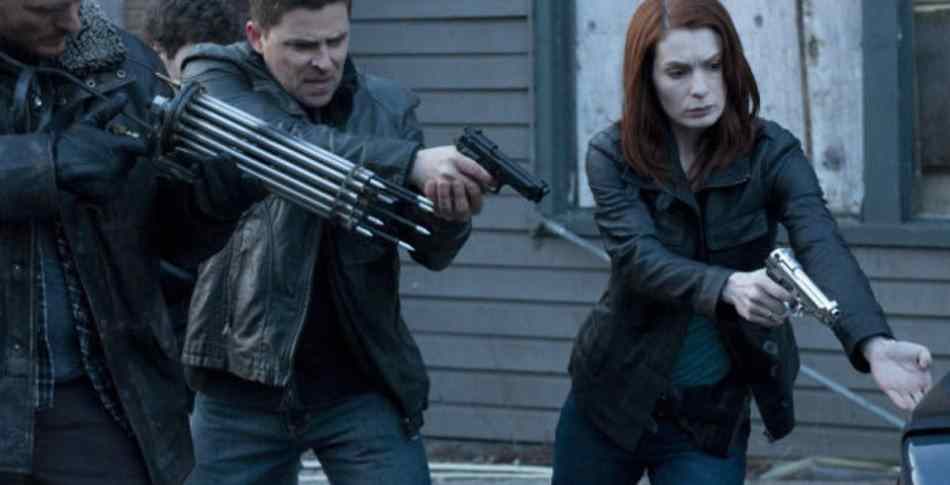 Also in 2011, the MTV mockumentary series Death Valley followed members of the Undead Task Force in California’s San Fernando Valley as they police the streets for the zombies, vampires and werewolves that have recently begun to plague the population. It was from a concept by Rob Zombie’s brother Spider One, the lead singer of Powerman 5000, and only lasted for one season. This same year, the strange Monster Brawl was released, depicting an imaginary pay-per-event that pitted various monsters (one of them a werewolf) against one another in a regulated fight to the death, complete with ringside announcers. Critically speaking, it did not fare well.
Also in 2011, the MTV mockumentary series Death Valley followed members of the Undead Task Force in California’s San Fernando Valley as they police the streets for the zombies, vampires and werewolves that have recently begun to plague the population. It was from a concept by Rob Zombie’s brother Spider One, the lead singer of Powerman 5000, and only lasted for one season. This same year, the strange Monster Brawl was released, depicting an imaginary pay-per-event that pitted various monsters (one of them a werewolf) against one another in a regulated fight to the death, complete with ringside announcers. Critically speaking, it did not fare well.
The animated film Hotel Transylvania hit theaters in 2012, and revolved around the happenings at the titular hotel run by Count Dracula where monsters can vacation from the human world. Among the guests are a married werewolf couple voiced by Steve Buscemi and Molly Shannon. A sequel is intended for release later this year.
2012 also offered up the British television series Wolfblood, following a pair of teen werewolf girls trying to keep their secret from society; the metaphorical werewolf film Jack & Diane, which starred the beautiful Juno Temple and Riley Keough as a lesbian couple; and the Louis Morneau-directed period piece Werewolf: The Beast Among Us starring Nia Peeples.
In 2013, we saw the Eli Roth-produced Netflix original series Hemlock Grove based on the novel by Brian McGreevy, about a fictional town full of secrets…and werewolves; the found footage flick Wer from William Brent Bell; and SyFy’s Battledogs, featuring werewolves battling the military.
And 2014 gave us some buzzworthy additions: the darkly comedic What We Do in the Shadows, which was primarily about vampires but featured werewolves, as well; Late Phases starring Ethan Embry and Nick Damici; and the riotous Wolfcop.
This lands us squarely in the present. So far, there haven’t been any releases that have us howling at the moon, but with the new year just getting started, we here at Wicked Horror are keeping our fingers crossed that 2015 proves to be the Year of the Wolf.
